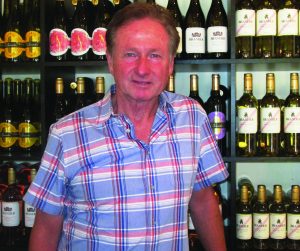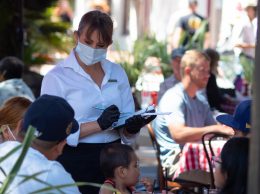It won’t be long before the region’s wine map will be shaded in with Santa Barbara County’s newest viticultural area, the Los Olivos District, nearly completing a profile of the Santa Ynez Valley as a diverse wine producer.
Fred Brander, one of the county’s most senior viticulturists, began exploring the idea of an American Viticultural Area, or AVA, encompassing some of the original vineyards in the Santa Ynez Valley shortly after the Sta. Rita Hills appellation was established in 2001. As it turned out, the Los Olivos District will be one of the last puzzle pieces on the valley’s viticultural map.
It fits in neatly between the Happy Canyon AVA to the east, the valley’s warmest wine region known for Bordeauxs, and Ballard Canyon AVA to the west, a slightly cooler area than Los Olivos with different soil profiles and known best for syrahs. Those appellations were approved in 2009 and 2013 respectively. The Sta. Rita Hills AVA, west of U.S. 101, is in the east-west facing valley’s coolest section, well known for pinot noirs and chardonnays.
The federal Alcohol and Tobacco Tax and Trade Bureau has formally proposed establishing the Los Olivos District AVA, and 76 public comments have been received, all favorable. The wine appellation is expected to easily win approval, likely by the end of the year.
I sat down with Brander, who wrote the AVA proposal, in the shaded picnic area outside his Brander Vineyard tasting room to hear about Los Olivos wines and his own story. One thing that stands out about the AVA is the uniformity of elevation and soil type across the district. It is bordered on the south by the Santa Ynez River at an elevation of 400 feet and on the north by the 1,000-foot elevation line of the San Rafael Mountains. There are hardly any steep slopes, and the soil is an alluvial fan of gravel and sandy loam spreading gradually from the foothills.
The result is vineyards that are relatively easy and less expensive to farm, with more consistent soil and watering. “You don’t have areas where the vines struggle on the mountainside and do better on the lower elevation,” Brander said. “. . .They all get the same amount of water, they get the same soil so they ripen relatively at the same time.”
An important advantage not noted in the AVA application, Brander said, is that Los Olivos water wells are the most dependable in the valley because of the drainage pattern from the foothills.
The climate in the AVA is moderate in temperature. Bordeaux and Rhone grapes grow well there, as well as Spanish varieties such as tempranillo and albrino and Italian grapes including sangiovese.
Brander expects the Los Olivos District to be best known for Bordeauxs, especially a classic, Napa Valley style of cabernet sauvignon, simply because of economics: Cabernet is the most popular and profitable red grape. “There’s more money in cabernet than syrah. So if you can make a really good cabernet why don’t you focus on that?” he said.
Brander devotes a lot of attention to sauvignon blanc, producing 11 different bottlings of the Bordeaux varietal. Besides his top-selling Santa Ynez Valley sauvignon blanc, he offers a limited-release estate varietal and produces small lots in New Zealand, Bordeaux and Sancerre (Loirre Valley) styles, and vineyard-designate bottlings, mostly from the Los Olivos District.
When he first planted his vineyard in 1975, it was mostly cabernet and sauvignon blanc. “Sauvignon blanc, we hit a home run,” he said. “The first crop got a gold medal at the L.A County Fair. So figure that was an instant success, and we since then haven’t looked back and made more and more sauvignon blanc.”
Cabernet was a different story, Brander said. His first plantings were too vigorous, with excessive canopy shading of the fruit. The result was grapes that were high in pyrazines, a compound that imparts a bell peppery quality not popular with wine critics. The vines were also susceptible to the damaging disease phylloxera.
“So we’ve had to fight that but in the last say 15 years we’ve really, just through (newer) root stock and improved viticulture, we’ve been able to create I think much better cabernet, and cabernet that can compete with any in California,” Brander said. His reserve 2013 cabernet retails for $50 a bottle.
The only sizable wine area of the Santa Ynez Valley without a sub-AVA once Los Olivos gets approval will be Foxen Canyon, home of well-known wineries including Firestone, Fess Parker and Zaca Mesa.
Brander said getting an AVA will help marketing of Los Olivos wines because there is a good story behind it. And being in an AVA with the most wineries in Santa Barbara County and a lot of on-site tasting rooms is a plus, he said, because “the best promotional tool you have for an AVA are the tasting rooms.”






 Print
Print Email
Email


















